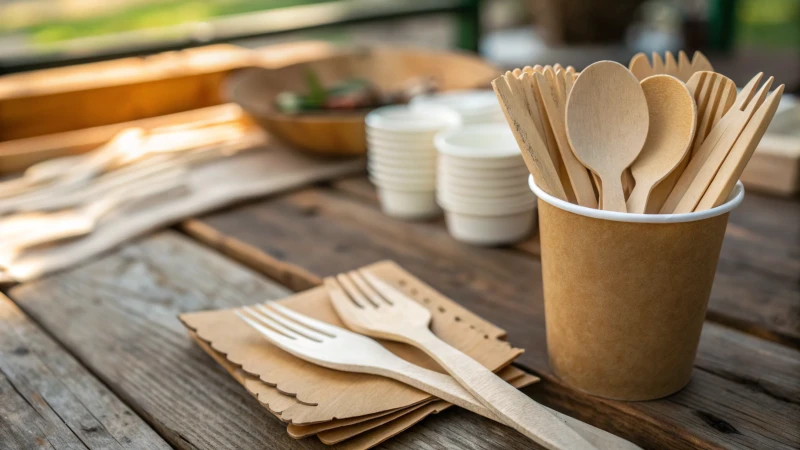
Ever wondered if you can put a personal touch on something as simple as wooden cutlery?
Absolutely! Customers can customize disposable wooden cutlery in shapes, sizes, and designs. Suppliers offer various options to tailor these products to match specific branding needs, align with aesthetic preferences, and enhance functionality, providing an eco-friendly alternative to traditional plastic cutlery.
I remember the first time I realized how much customization could elevate a brand. I was planning an event and wanted everything to reflect our eco-conscious ethos. That's when I discovered that even disposable wooden cutlery could be tailored—shapes, sizes, designs—all to match the vibe we were going for. This wasn't just about aesthetics; it was about sending a message of sustainability.
Diving deeper into the world of customizable wooden cutlery, I found that it's not just about looking good. It's about aligning with values and standing out in the market. Suppliers use cutting-edge technology to ensure even the tiniest details are perfect. This means I can have peace of mind knowing the cutlery not only represents my brand well but also meets high standards of quality and environmental responsibility.
Wooden cutlery cannot be customized in design.False
Wooden cutlery can indeed be customized in design as per needs.
Eco-friendly cutlery enhances brand alignment.True
Using eco-friendly cutlery aligns with sustainable brand values.
What Are the Common Customization Options Available?
Have you ever wondered how a splash of color or a twist in design can transform a product into something uniquely yours? Let's explore the magic of customization together.
Common customization options include design alterations, material choices, color variations, and personalized branding. These options allow businesses to tailor products to specific needs and preferences, enhancing customer satisfaction and brand recognition.
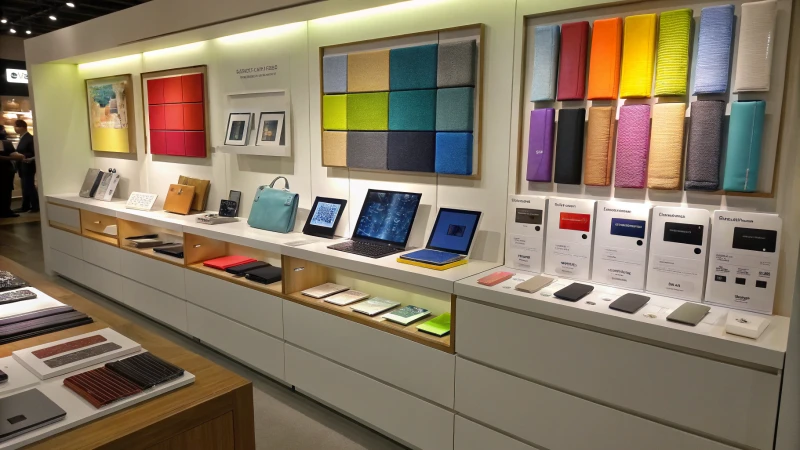
Design Alterations
Design alterations are like giving a product its own unique fingerprint. For example, imagine a restaurant chain personalizing their wooden cutlery1 to perfectly match their brand image. It’s not just about aesthetics; it's about creating a dining experience that feels complete and cohesive.
Material Choices
Choosing the right material can tell a story of values and priorities. I once worked with a luxury hotel2 that decided to use bamboo instead of plastic for their amenities. It was a statement of elegance and environmental responsibility, showing guests that luxury and sustainability can go hand in hand.
| Material Options | Benefits |
|---|---|
| Bamboo | Eco-friendly, durable |
| Recycled Plastic | Cost-effective |
| Stainless Steel | Long-lasting, premium |
Color Variations
The power of color is undeniable. In my experience with e-commerce, offering products in trendy colors can significantly boost their appeal. Customers love choices that reflect their personalities or match their decor, and this can translate into increased sales for businesses like Lisa's.
Personalized Branding
Adding a personal touch with logos or messages can create a deep connection between a brand and its customers. I’ve seen event planners3 use bespoke gifts to leave lasting impressions, turning ordinary items into cherished keepsakes.
Combination of Options
Using a combination of these options can truly set a product apart. Think of a healthcare institution4 needing items that are both branded and made from specific materials to meet strict standards. It’s about meeting practical needs while maintaining a strong brand identity.
Design alterations maintain brand consistency.True
Design alterations ensure a cohesive look across various outlets.
Bamboo is cost-effective compared to recycled plastic.False
Bamboo is eco-friendly and durable, not primarily cost-effective.
How Does Customization Impact the Functionality of Wooden Cutlery?
Ever wondered how a simple change in design could transform your wooden cutlery into something extraordinary?
Customizing wooden cutlery enhances its functionality by adapting design elements to improve usability, durability, and brand identity. This personalization boosts user satisfaction and promotes eco-friendliness.
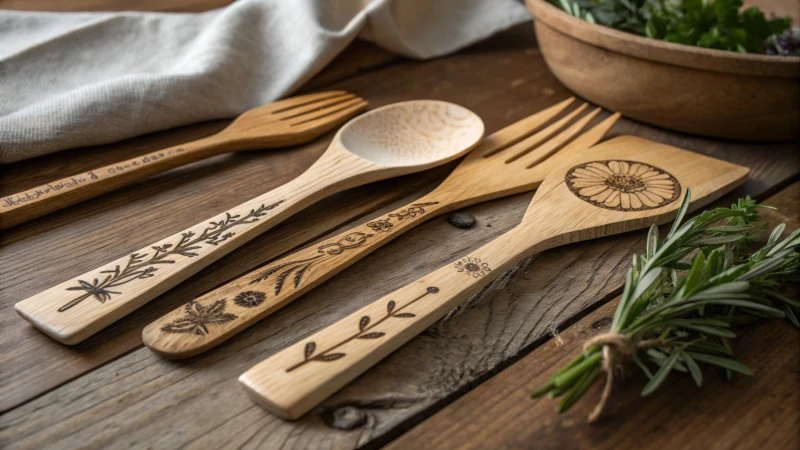
The Role of Custom Design in Enhancing Usability
I've always been fascinated by how a little tweak here and there can turn the ordinary into something that feels tailor-made just for you. When it comes to wooden cutlery, customization plays a huge role in optimizing usability5 for specific settings. Imagine a restaurant chain needing handles that are not just practical but a joy to hold, offering comfort during those long hours of use. Ergonomic designs can make all the difference, right? And then there are those tailored shapes that elevate dining experiences, making them perfect for different cuisines.
Balancing Aesthetics and Functionality
It's amazing how customization bridges the gap between function and beauty. Have you ever been to a high-end restaurant where the cutlery seemed like a work of art? It's not just about the looks—these designs are meant to reflect the brand's luxury image without compromising on performance. I remember being at a place where the engraved logo on my fork was as much a part of the experience as the meal itself. It’s fascinating how such details can heighten brand recognition and add a touch of sophistication to dining.
| Feature | Customization Benefit | Example |
|---|---|---|
| Ergonomic Handles | Enhanced Comfort | Suitable for prolonged use in restaurants |
| Engraved Logos | Brand Recognition | Ideal for upscale dining establishments |
| Specialized Shapes | Better Usability | Perfect for specific cuisines or food types |
Impact on Sustainability and Eco-Friendliness
I’m all for sustainability, so it’s great to see how customizing wooden cutlery can support eco-friendly efforts. Using biodegradable materials or sustainably sourced wood is not just good for the planet, but it also resonates with eco-conscious consumers. Remember that time when I was involved in a project with plasma nano-coating6 technologies? It gave the products this amazing water-resistant finish that not only increased their lifespan but also maintained their appeal—sustainability meets durability!
Branding Through Personalized Cutlery
For businesses like mine, customized wooden cutlery is more than just utensils—it’s an extension of our brand identity. Through personalized designs, we can communicate values like sustainability and exclusivity, which are key to creating memorable dining experiences. This is especially crucial in industries where branding7 is everything. Understanding customization's many facets—from design to sustainability—empowers us to make smart choices that enhance our wooden cutlery's functionality while aligning with our brand and environmental goals.
Customized wooden cutlery enhances ergonomic comfort.True
Customization allows for ergonomic design, reducing fatigue during use.
Engraved logos on cutlery compromise performance.False
Engraving logos does not affect the functionality of cutlery.
What Are the Challenges in Customizing Wooden Cutlery?
Ever tried customizing wooden cutlery and hit a roadblock? You're not alone. Let's explore the real challenges behind turning these eco-friendly options into personalized masterpieces.
Customizing wooden cutlery involves balancing intricate designs with practical limitations. While advanced techniques offer creative freedom, factors like wood type and cost can restrict design possibilities. Evaluating these aspects helps optimize customization efforts.
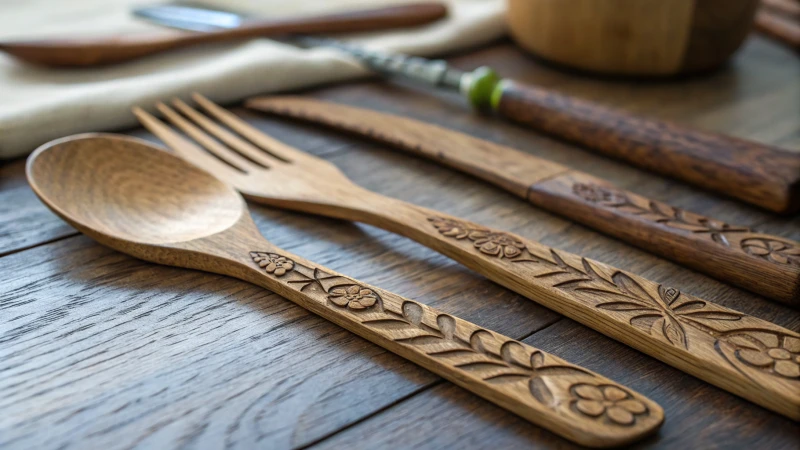
The Intricacies of Wooden Cutlery Customization
I remember the first time I decided to dive into the world of wooden cutlery customization. The idea of crafting something unique and eco-friendly was thrilling. With cutting-edge technologies like 5-axis CNC machining at our disposal, it's possible to create stunning, intricate designs with a precision that's almost magical — think tolerances as fine as ±0.01mm. It's like drawing a masterpiece on a tiny canvas, knowing every detail will shine.
However, not all wood types offer the same customization potential8. My first attempt involved some softer woods because, let's face it, they were more budget-friendly. However, I quickly learned that hardwoods like bamboo and maple are the stars of the show when it comes to durability and finish quality, albeit at a higher cost.
Limitations in Durability and Functionality
Aesthetics are essential, but what about functionality? I discovered that adding too much flair could compromise the strength of the cutlery. Wooden pieces just don't hold up like metal or plastic when it comes to wear and tear. There was this one time I went all out with intricate designs for a special event, only to find that they didn't last through the night!
To combat this, treatments like plasma nano-coating came into play, offering enhanced durability and water resistance. But again, there's a trade-off. These treatments can limit the types of finishes or textures we can apply, forcing us to choose between looks and longevity.
| Aspect | Advantages | Limitations |
|---|---|---|
| Design Flexibility | Intricate patterns; high precision | Limited by wood type; potential cost increase |
| Durability Enhancements | Plasma nano-coating for water resistance | May limit finish options |
| Cost Implications | Unique branding opportunities | Higher unit cost; longer production times |
Cost Considerations in Customization
Cost — the ever-present factor in any customization project. I remember negotiating budget constraints while still trying to meet sustainability goals. Advanced customization techniques can drive up costs significantly due to specialized tooling and extended production times. For businesses focusing on eco-conscious branding9, like restaurants or retail stores, this can pose quite a challenge.
In one instance, the custom designs required led to increased lead times and minimum order quantities. It was a balancing act between fulfilling brand needs and sticking to the budget.
Understanding these elements helps businesses like mine navigate the complexities of customizing wooden cutlery to suit brand needs while ensuring reliability and sustainability.
Examples of Effective Customization
Successful customization often requires a balance between design intricacy and practicality. I recall a luxury restaurant project where we opted for simple yet elegant engravings that embodied their brand without compromising on strength or cost efficiency.
Similarly, an eco-friendly retail chain10 focused on biodegradable coatings that aligned with their sustainable values while maintaining affordability. By keeping these considerations in mind, companies can effectively integrate customized wooden cutlery into their offerings.
5-axis CNC machining allows for intricate wooden cutlery designs.True
This technology supports complex patterns with high precision.
Softwoods are preferred over hardwoods for cutlery customization.False
Hardwoods like bamboo and maple are preferred for durability.
How Do Custom Designs Elevate Brand Identity?
Ever wondered how a simple design tweak could elevate your brand to the next level?
Custom designs amplify brand identity by crafting distinct visual elements that not only set a company apart but also build recognition and trust with consumers.
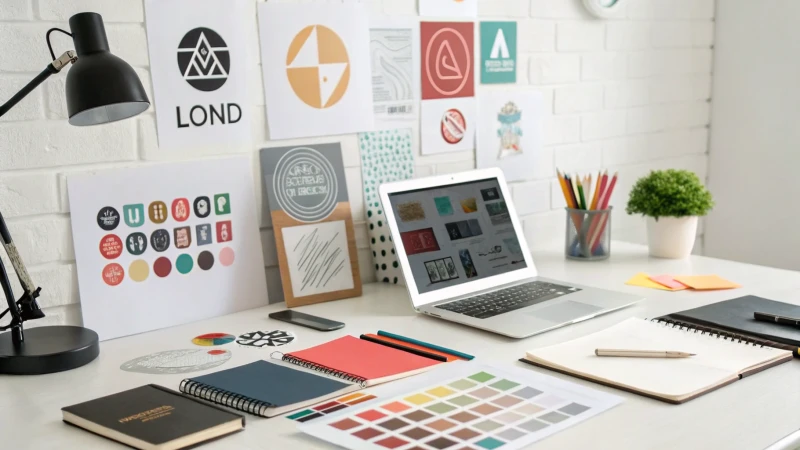
I remember when I first realized the power of custom designs. It was like finding the perfect key for a lock I didn’t even know was there. You see, in this bustling world of brands shouting for attention, having something uniquely yours is everything.
The Role of Custom Designs in Brand Differentiation
Think about walking down a crowded street filled with shops. What catches your eye? Probably those brands with logos and colors that tell a story—one that feels like it’s speaking directly to you. That's what custom designs do—they craft those unique visual elements that say, "Hey, look at me!" and more importantly, "Remember me." This kind of distinctiveness is vital for making sure consumers can easily spot and recall your brand amidst the noise.
Building Trust Through Consistency
Imagine visiting your favorite coffee shop. You know the feel of their cups, the layout of their menu, the soothing tones of their branding. That’s consistency, and it builds trust. With custom designs, every element—from the napkin to the signboard—speaks the same language, reinforcing reliability and professionalism. For me, it’s like meeting an old friend; you know what to expect, and there’s comfort in that.
Enhancing Consumer Engagement
Engagement isn’t just about flashy ads; it’s about connection. Picture a brand that knows you well enough to tailor its visuals just for you. That’s where custom designs shine. They allow a brand to resonate on an emotional level with its audience, making each interaction feel personal and meaningful.
Exploring Design Elements
Below is a table outlining different custom design elements and their impact on brand identity:
| Design Element | Impact on Brand Identity |
|---|---|
| Logo | Serves as the face of the brand, making it instantly recognizable. |
| Color Scheme | Evokes emotions and associations, contributing to brand perception. |
| Typography | Communicates the brand's tone and style through text. |
Leveraging Technology for Custom Designs
We’re living in an incredible age where technology like AI-driven tools can turn a rough sketch into a precise CAD model11. It’s like having an artist who never tires, ensuring every line and curve perfectly matches your vision while keeping quality top-notch.
Sustainable Custom Design Practices
Sustainability isn’t just a buzzword; it’s a necessity. I’ve seen companies embrace eco-friendly practices not just as an afterthought but as a core part of their design strategy. Using materials and methods like plasma nano-coating ensures that products are both durable and kind to our planet—because who says you can’t have both quality and sustainability?
Through these custom designs, brands not only carve out their unique space in the market but also create lasting relationships with their audience, one beautifully crafted element at a time.
Custom designs enhance brand differentiation.True
Unique visuals set brands apart in a crowded marketplace.
Consistency in branding is irrelevant for consumer trust.False
Consistent visuals reinforce reliability and professionalism.
Conclusion
Customers can customize disposable wooden cutlery in various shapes, sizes, and designs, enhancing brand identity while promoting sustainability and functionality through eco-friendly materials.
-
Explore how wooden cutlery can be customized in design to enhance brand identity and customer experience. ↩
-
Discover how luxury hotels select materials that balance sustainability with luxury. ↩
-
Learn how event planners personalize products to create memorable experiences for their clients. ↩
-
Find out how healthcare institutions combine branding with material standards for their supplies. ↩
-
Discover how ergonomic designs improve comfort and usability in various dining settings. ↩
-
Learn how plasma nano-coatings enhance durability and eco-friendliness. ↩
-
Explore how personalized cutlery can reinforce brand identity and customer loyalty. ↩
-
Exploring different wood types helps in selecting materials that balance customization potential with durability. ↩
-
Discovering effective eco-friendly strategies can guide businesses in aligning their sustainability goals with customization efforts. ↩
-
Learning from successful eco-friendly retailers provides insights into effective product integration and customer appeal. ↩
-
Explore how AI technology aids in creating precise design models, enhancing brand reliability. ↩

